How to Visit Spain’s Outstanding Monfragüe National Park
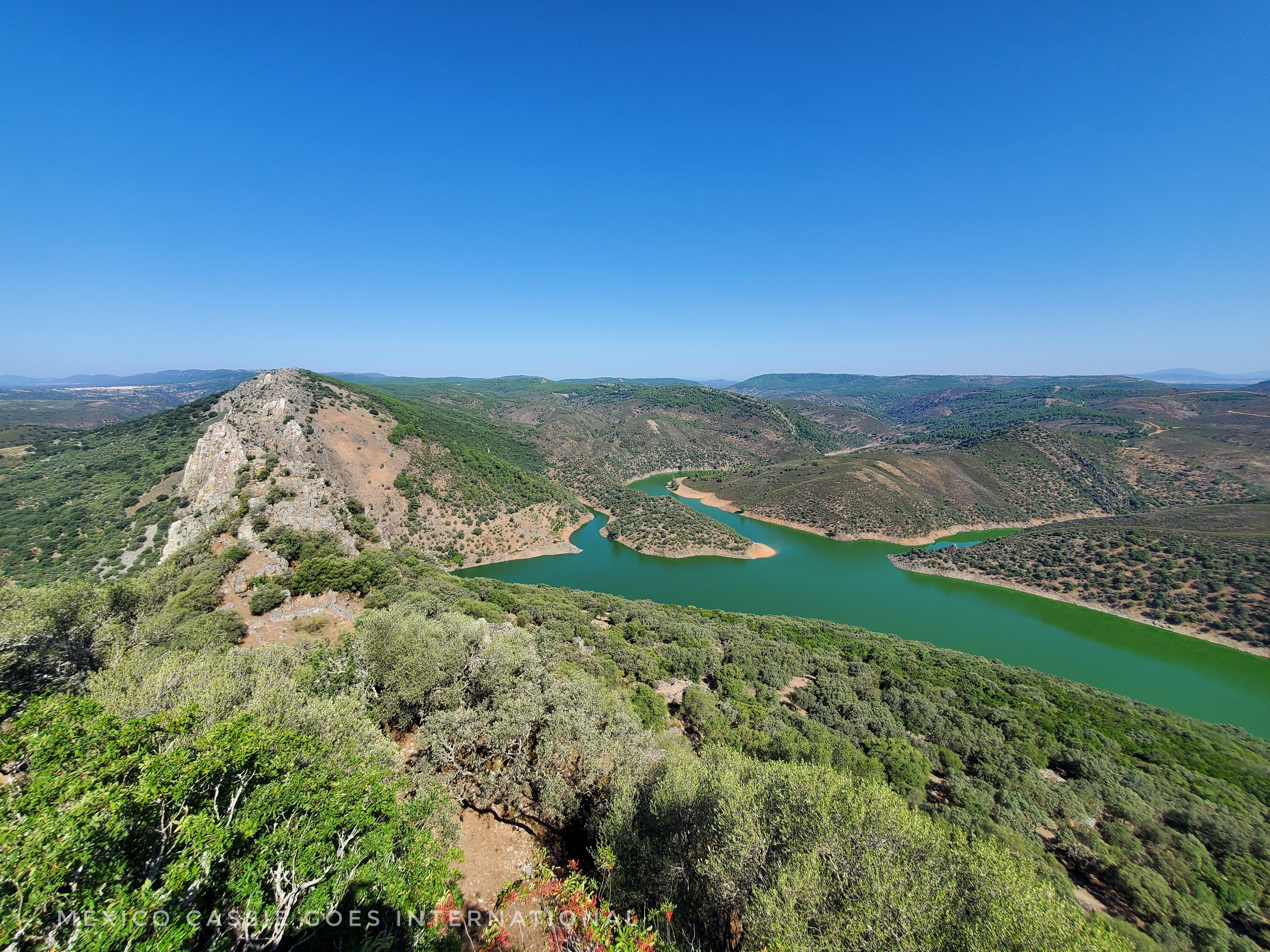
Monfragüe National Park (Parque Nacional Monfragüe) is one of the best places you’ve never heard of. If you love hiking, nature, birding, history and magnificent views then Mongragüe National Park is the perfect place for you. Imagine being surrounded by cork oak forests, deep gorges, rivers, soaring vultures, jagged mountain peaks and very few people. This is Monfragüe National Park.
I recently spent time getting to know this magnificent part of Spain and hope that with this article I can persuade you that you should grab your walking shoes and binoculars and plan a trip to this Spanish slice of paradise.

There are affiliate links in this article. If you click and make a purchase I could make a small sum at zero cost to you. Thank you!
Highlights of Monfragüe National Park
🌳 Flora – This is one of the largest and best preserved areas of Mediterranean Forest and scrub in Europe. It is full of oak and cork trees. The park encompasses both the Rivers Tajo and Tiétar.
🦌 🦅 Fauna – The national park is home to rare wild cats, deer, vultures, storks, eagles, falcons, wild boar and more. It’s actually one of the best places for birding in all of Spain.
📖 History – From prehistoric cave art to the ninth century Moorish Monfragüe Castle, humans have long left their mark on this magnifcent part of the world.
🥾 Walks and Hikes – There are numerous fabulous walks and hikes in the park including two short walks that are marked as wheelchair accessible: one by the Ruta del Arroyo Malvecino (700m) and one at the Ruta de la Fuenta del Frances (500m).
🚵🏽 Mountain Biking – there are bike routes (and horse riding routes) marked on maps.
🔭 Viewpoints – Salto del Gitano viewpoint is the most famous but there are many official and unofficial amazing viewpoints to visit. I also recommend Fuente del Frances and Puente del Cardinal,
⭐️ Visitors Centres – There are a number of visitors centres throughout the national park including in the villages of Villarreal de San Carlos, Torrejón el Rubio (inc Astronomical Observatory) and Romangordo.
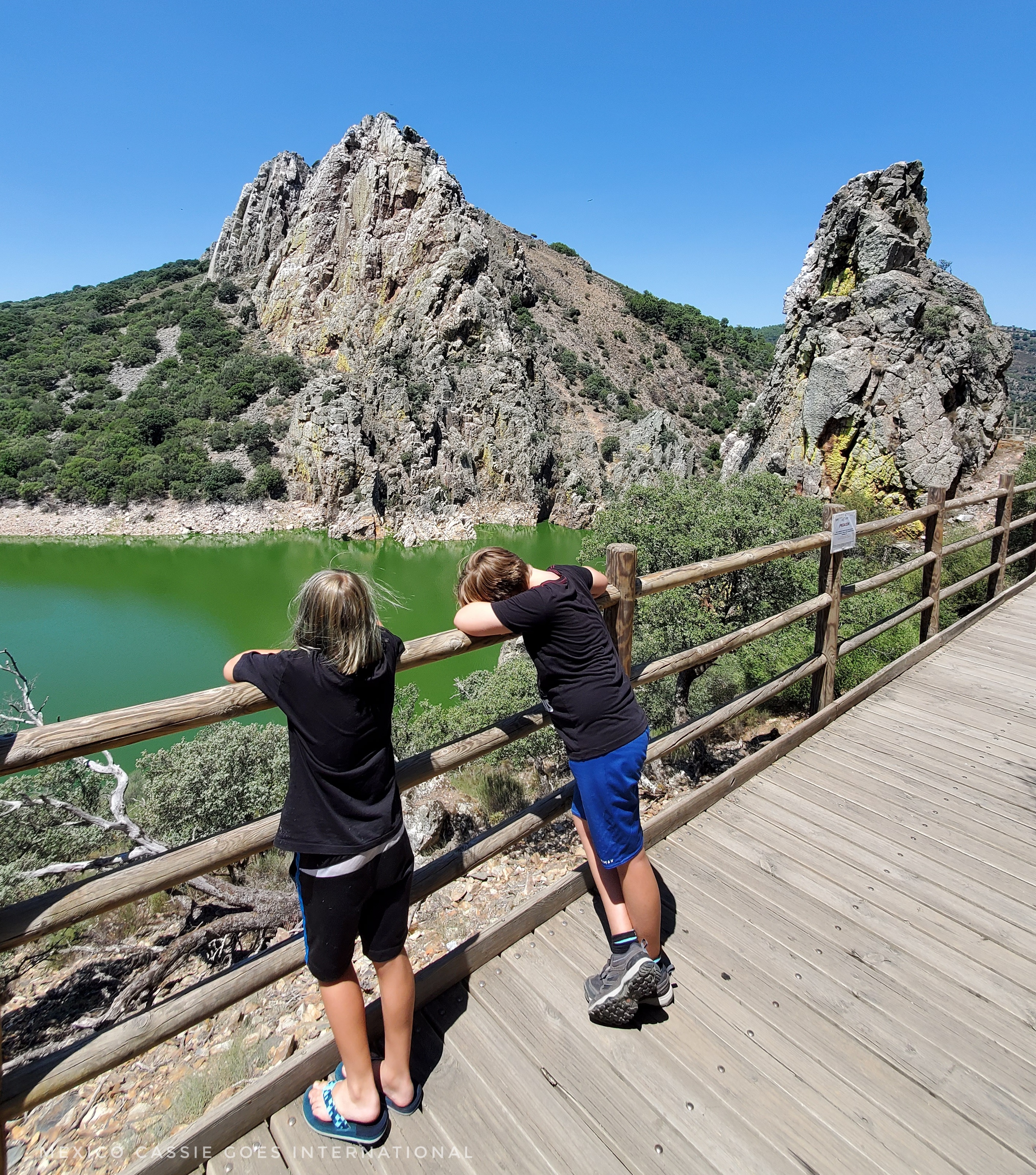
How to visit Monfrague National Park
Monfragüe National Park is located in the province of Cáceres, in the autonomous region of Extremadura (capital Mérida) in the south west of Spain.
🚗 Unless you want to take an organised tour, you’ll need a car to visit Monfragüe National Park. Renting a car in Spain is very easy.
Distance from Other Cities in Spain
Mérida – 1hr30 (138 km)
Sevilla – 3hr15 (330 km)
Madrid – 2hr30 (229 km)
Plasencia – 20 minutes (21 km)
Segovia – 2hr45 (248 km)
Cáceres – 50 minutes (60 km)
Toledo – 1hr55 (190 km)
Salamanca – 1hr30 (150 km)
We drove from our home town of Alcalá de Guadaíra, just outside Sevilla and when we left, drove on to Segovia. Both were beautiful drives through gorgeous countryside.
Where to Stay When Visiting Monfragüe National Park
There are a few options for hotels and apartments in the area, the majority being in Torrejón el Rubio:
We stayed in Apartamentos Monfragüe in Torrejon el Rubio and I couldn’t recommend it more highly. The apartment was clean, well equipped, we had access to a small pool and the owners were extremely friendly and helpful.
There are other scattered hotels around the area but this is by far the biggest concentration. Villarreal de San Carlos looks as if it has one or two hotels and there is an official campsite between Plasencia and Villarreal de San Carlos (remember, wild camping is prohibited in Spain).
Eating in Monfragüe National Park
We found decent restaurants in Torrejón el Rubio and in Villarreal de San Carlos. We mostly ate picnics or cooked simple meals for ourselves though because restaurants are few and far between.
About Parque Nacional de Monfragüe and the Biosphere
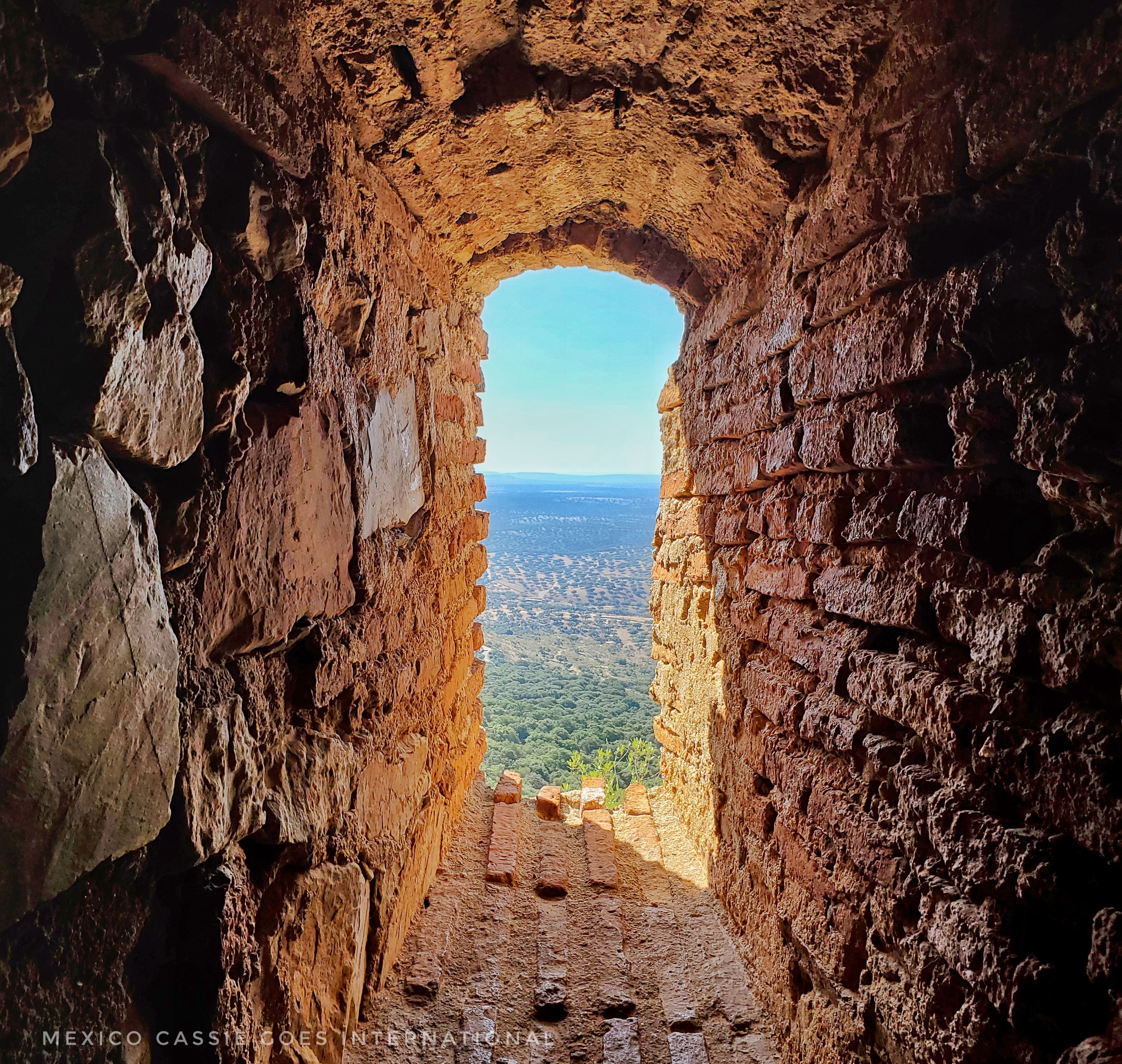
📌 Monfragüe is the national park in which you will find one of the largest and most extensive mediterranean forests on the Iberian Peninsula. It is also one of the best mediterranean mountain landscapes you’ll ever find.
📌 It was the first natural park to be declared in Extremadura in 1979. In 2007 it was declared a national park, the only one in all of Extremadura. In 2003 the national park and the area surrounding it was recognised by UNESCO as a Biosphere Reserve (of the 700 in the world, 52 are in Spain). It has been designated a special protection area for birds
📌 The biosphere reserve is bigger than the national park, entirely surrounding it. It covers fourteen municipalities and over 116,000 Hectares.
📌 Monfragüe is located around the confluence of the Tajo and Tiétar Rivers.
📌 If Monfragüe sounds weird and un-Spanish to you, you’re right. The name comes from the Latin, Mons Fragorum (Fragmented Mountain), which is what the Romans called the extremely impressive Salto de Gitano when they were hanging out using mountains in their defenses. Monfragüe, by the way, is pronounced “Mon-fra-way”.
Villages in the Monfragüe Biosphere
There are fifteen villages within the biosphere reserve. While in the area I visited four of them:
Torrejon el Rubio
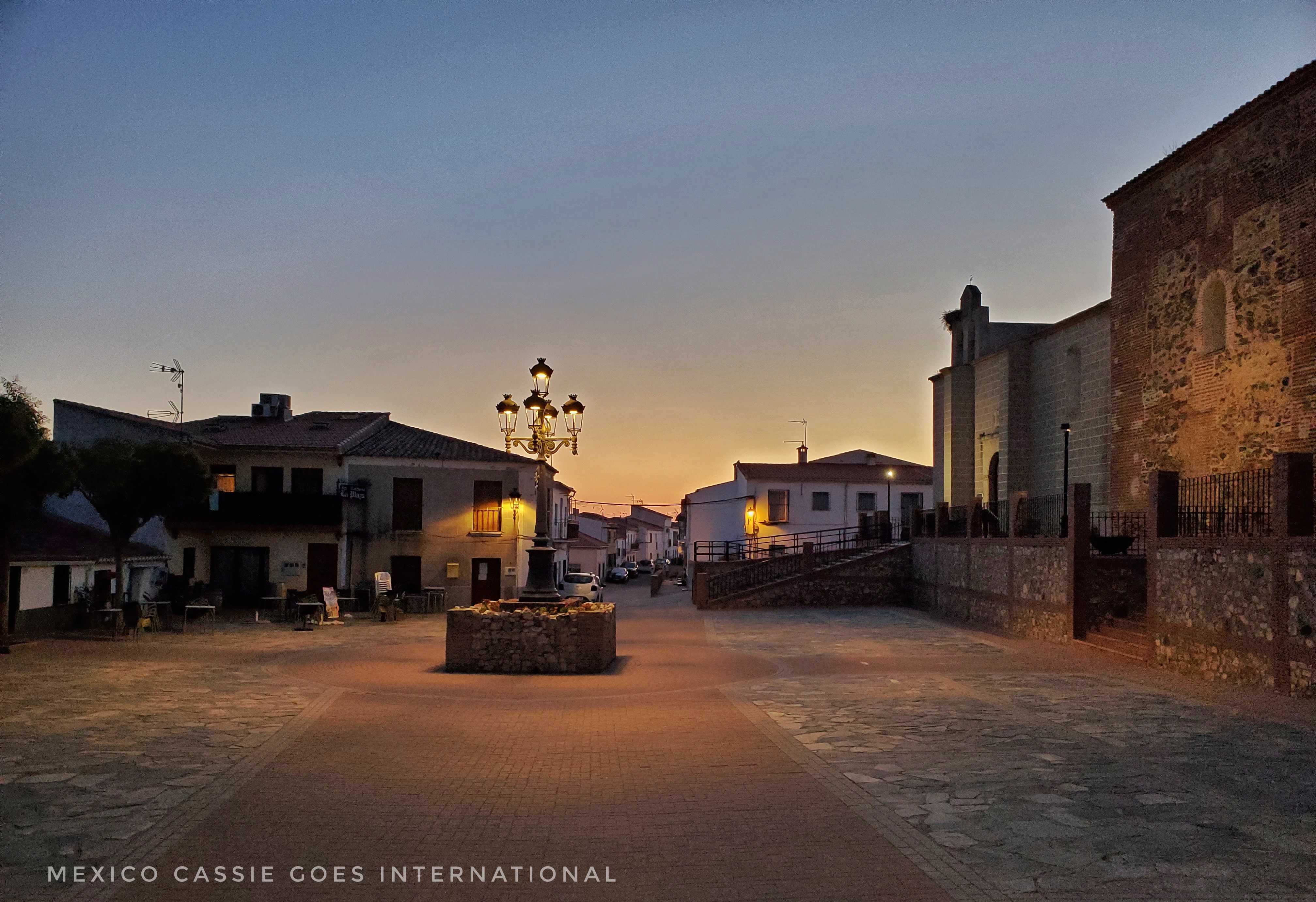
This is a good place to use as your base as there are hotels, a couple of restaurants, some small supermarkets and three of the interpretation centres and a tourist office are here.
The Astronomical Observation Centre has a good evening session where they get out powerful telescopes and explain the night sky. We all very much enjoyed this and were even invited back to see the sun through the telescope the next day. There is a small Rock Art Interpretation Centre here too.
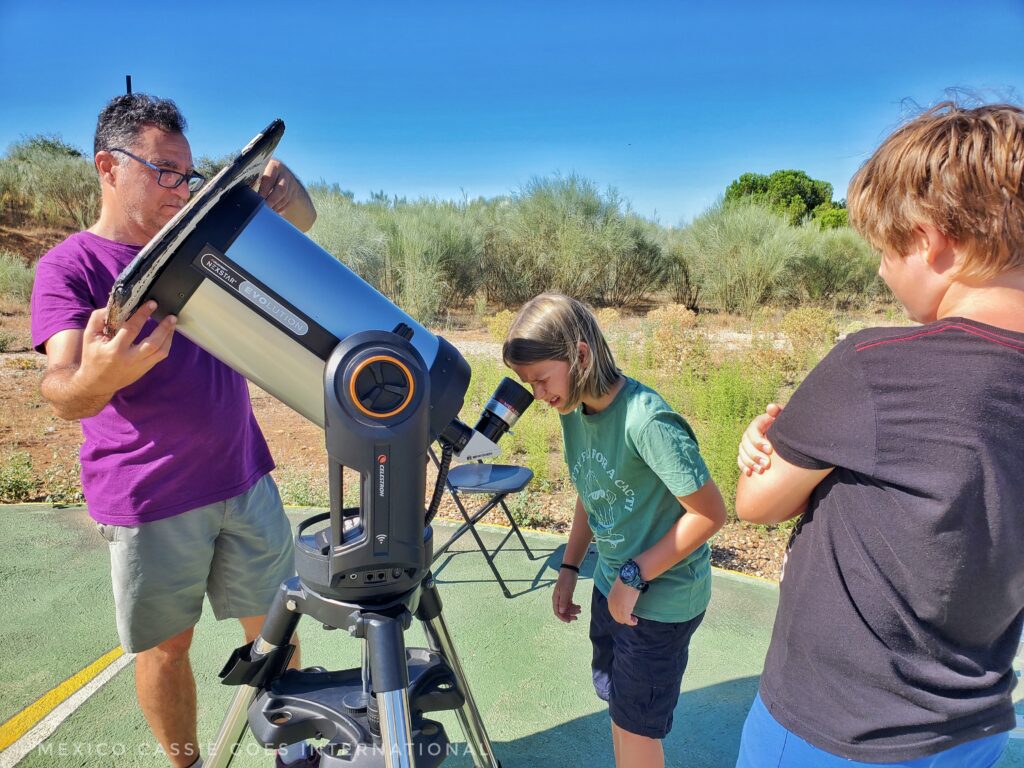
Villarreal de San Carlos
This is a tiny one-street village with two restaurants, a tourist office and the natural world interpretation centre. It is a good place to visit for the day if you enjoy hiking. We walked from here to Fuente de los 3 Caños and back. With our multiple detours and stops to play it took us three hours. There are a number of signposted walks that begin here in this settlement in the centre of the national park.
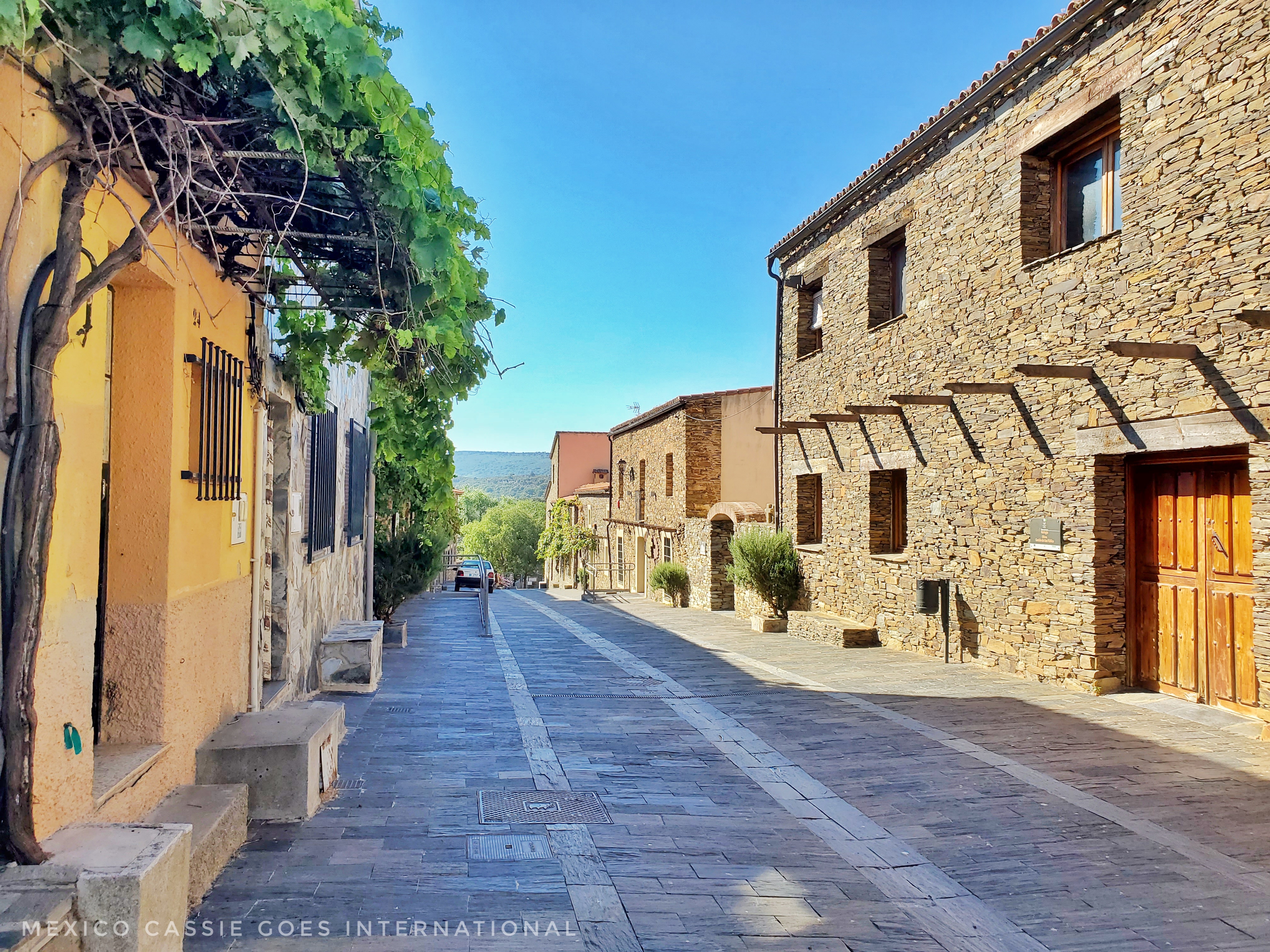
Serradilla
This is a small town with a slightly bigger supermarket than Torrejon el Rubio. Serradilla is known locally for its “parlal serraillanu”, the local dialect. Words from this dialect are painted on the houses in an attempt to conserve them. The Mark of Man Interpretation Centre is here too.
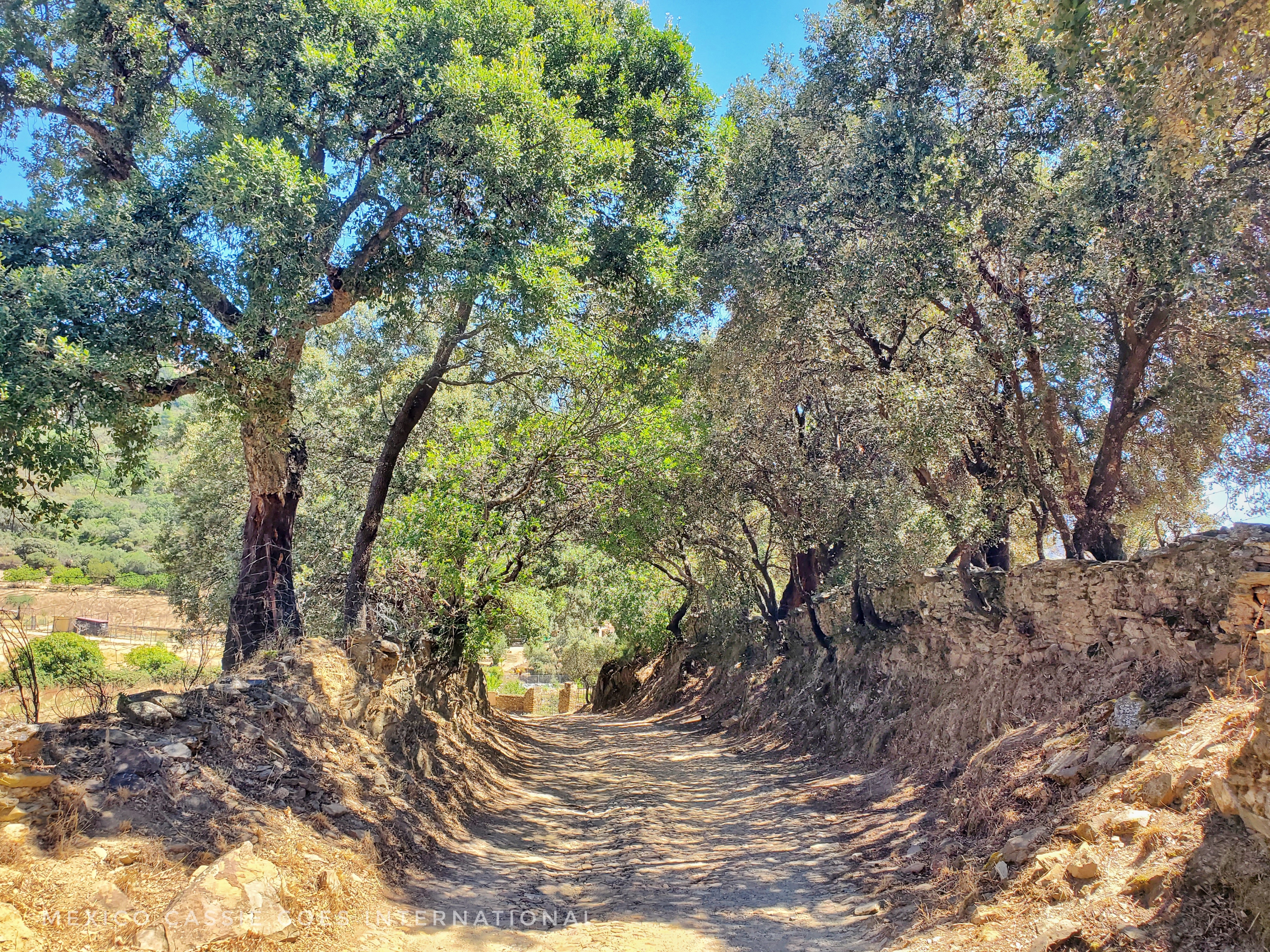
We visited Seradilla to walk to the Garganta del Fraile, a 10 km round-trip. The hike itself begins well enough, strolling down gorgeous tree lined paths surrounded by farmland. The midpoint is the Garganta and this was, in mid summer, pretty underwhelming as a waterfall without much water isn’t super special. We had a snack and then my daughter and I decided to go exploring. We climbed up as far as we could and were rewarded with magnificent views over the region.
To return you can either retrace your steps or continue on the loop. We took the loop, which was hot and offered zero shade. The views were, again, magnificent, but the lack of shade was pretty punishing.
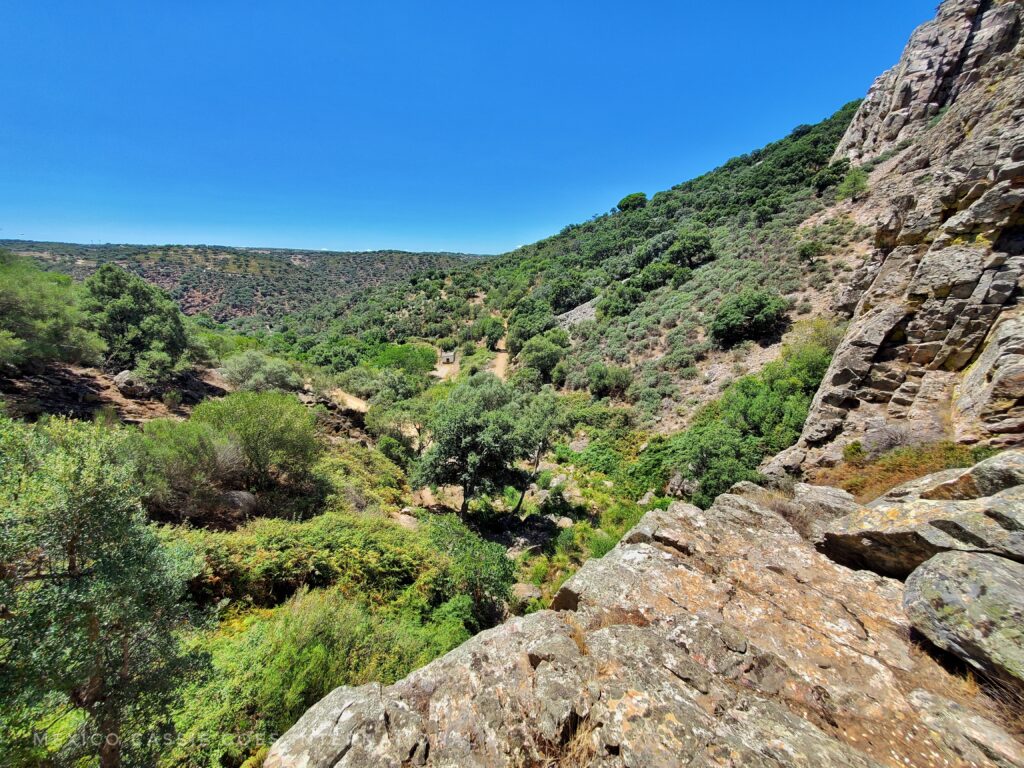
Top Tip: The official website says you should visit the tourist office and ask where the hike begins but we found it easier to find the hike than the tourist office since the hike starting point is correctly marked on Google Maps. Park here and follow the well marked route.
⭐️ There are a myriad of excellent reasons to visit Spain, keep reading to learn more about this magnificent country and its outstanding national parks ⭐️
Romangordo
Everyone should visit the tiny town of Romangordo (pop 300). We were actually really surprised by how wonderful this it was. We went on a whim and fell in love.
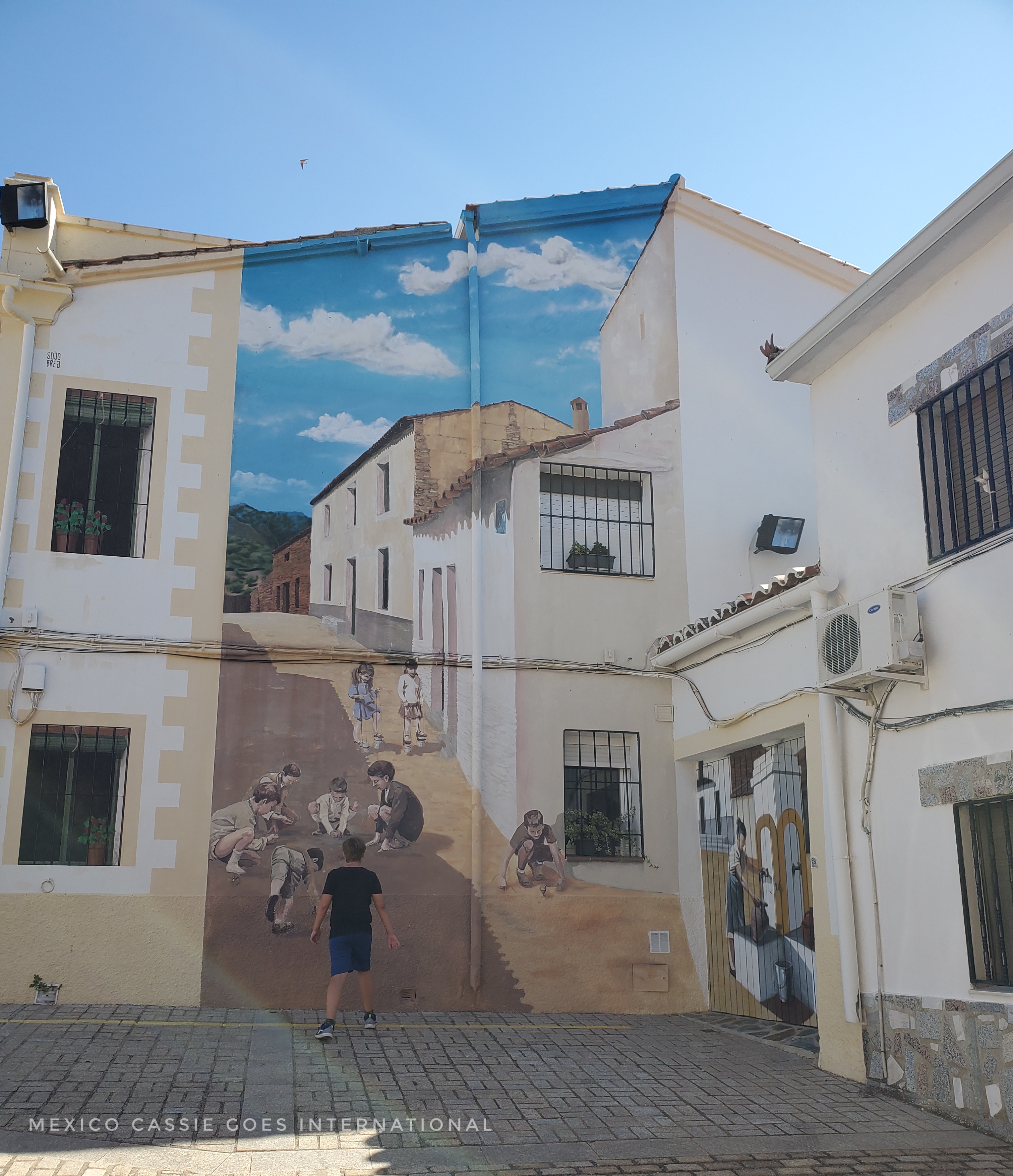
Surrounded by the dehesa (the specific type of agricultural land you see around here), Romangordo is a beautiful small town painted with murals and trampantojos (trompe l’oeille). Apparently in 2016 the town decided that instead of just painting their buildings they’d decorate them. The first year, with money provided by a local power station they hired three artists to paint murals and trompe l’oeille across the town and every year more paintings are added. It’s really quite phenomonal to see.
Some represent traditional trades, some honour locals, some show life in the village.
The beautiful church of Santa Catalina (sadly not open) has been declared an Asset of Cultural Interest. I very much enjoyed sitting on the main plaza and gazing at it.
When you’re in town, be sure to stop in at the Aroma Centre where you’ll be given a map of the trampantojos. We did try to follow the map but kept getting distracted. We ended up just wandering around gawking at all the incredible art. I’m sure we missed some but we were amazed by what we did see.
Ecomuseo de la Casa del Tío Cáscoles was closed when we visited, which was a shame as it looked very interesting
Route of the English Interpretation Centre gives a good run down on the Peninsula Wars and Napoleon’s interferences in Spain.
Nature in the Monfragüe National Park
So what will you see?
🌳 Forest and Rivers
- The forest is primarily made up of cork oaks and holm oaks.
- As noted above, there are two rivers, the Río Tajo (in English the Tagus River) and the Río Teitar. It is prohibited to swim in either of these rivers. The Tajo is the largest river on the Iberian Peninsula. It begins in mid-eastern Spain and flows for just over 1000km into the Atlantic in Lisbon, Portugal.
- The park sits at an altitude of between 220 – 773 m.
🦅 Birds
There is an astounding number of birds of prey to be found in the park.
- Vultures: Monfragüe is home to the largest colony of Eurasian black vultures in the world (there are 200 pairs). They live around the Salto de Gitano and are one of the largest birds in the park.
- There are also Leonardo and Egyptian Vulture colonies in the park.
- Eagles: You may spot a golden eagle, an eagle owl or even one of the ten pairs of Spanish Imperial Eagles in the park, also the world’s largest colony.
- Black kite
- Peregrine falcon
Top Tip: Because these birds are migratory, if you’re interested in birding then the best time to visit Monfragüe is between March – October.
🦌 Mammals
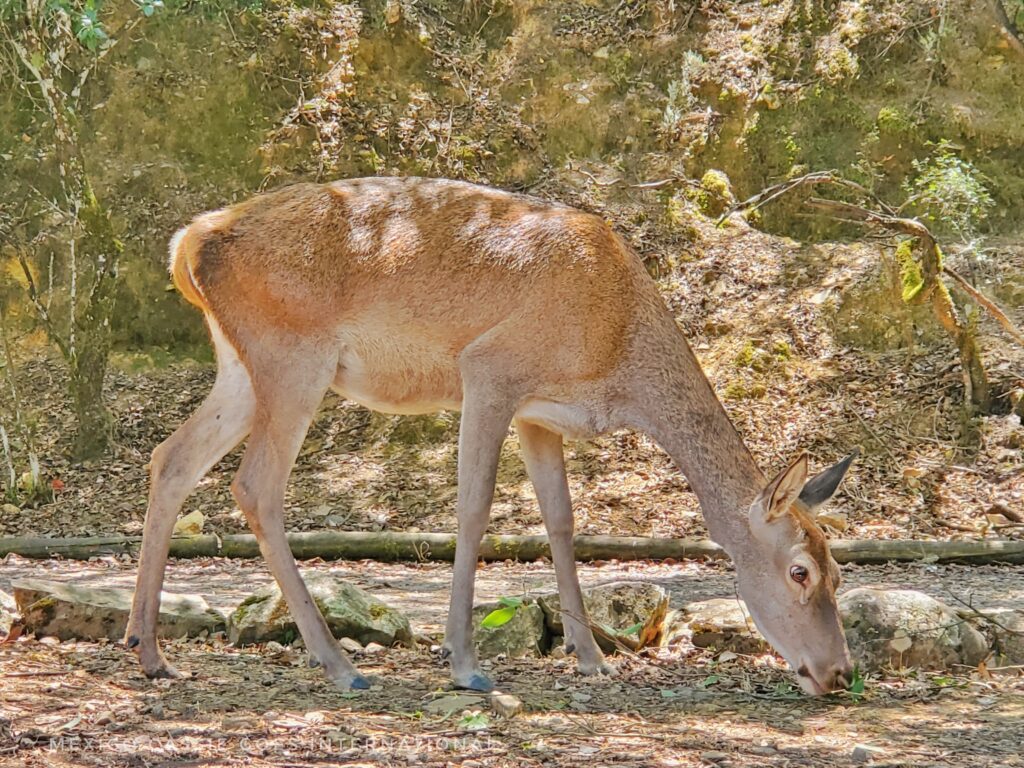
There are a good selection of Iberian Peninsula mammals found in Monfragüe:
- Deer – red deer, roe deer, fallow deer
- Rabbits, otters, mongoose, foxes
- Wild boar
- Badgers
- Iberian Lynx – which is actually an endangered species
What to do in Monfragüe National Park
If you’re considering spending time in this area then the chances are that you’re already a bit of a huuuuuge nature fan but visiting the park isn’t only about hugging trees and weeping at the beauty of the park (even if I did a lot of those two things).
Hiking in Monfragüe National Park
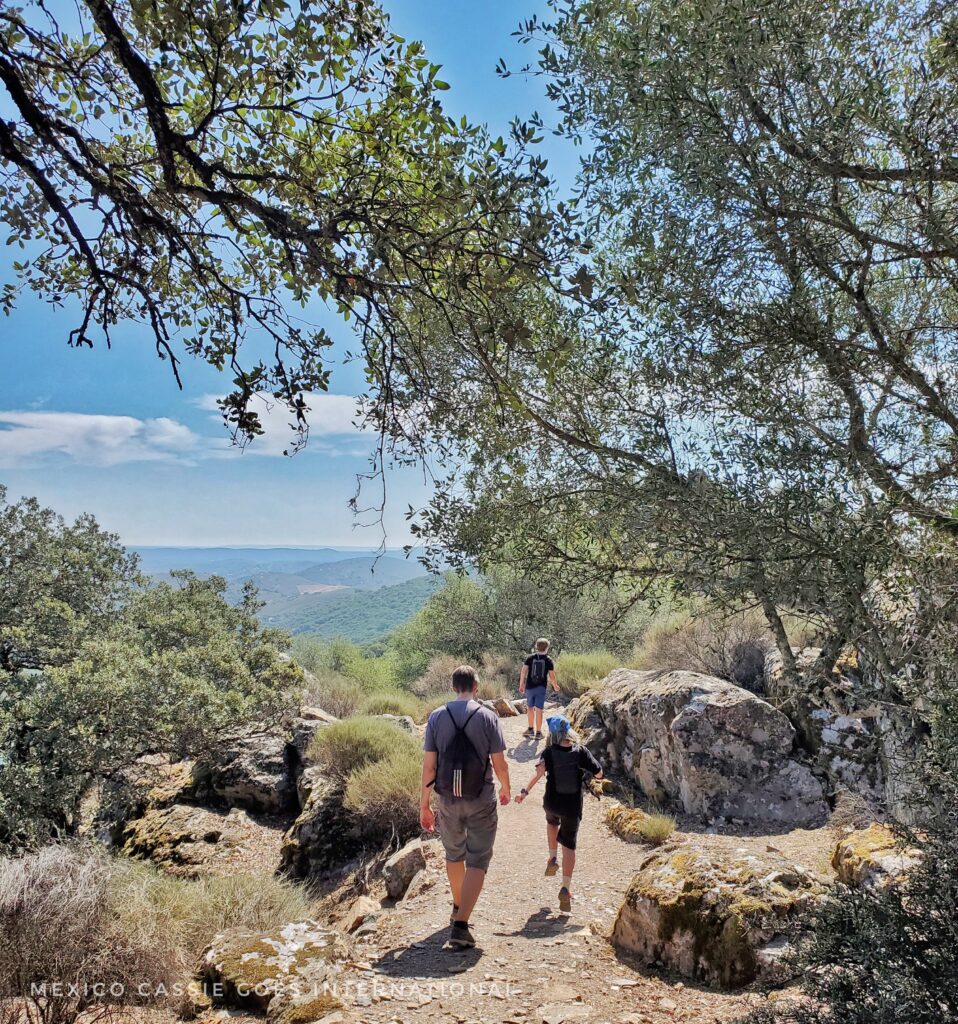
📌 There are a number of well-signposted hikes around the park. We did three: La Garganta del Fraile, one from Villarreal de San Marcos and one around Monfragüe Castle.
📌 Pick up trail maps at the tourist information centres. There are three primary treks outlined on maps
🔴 Castillo de Monfragüe – 16km (4-6 hours easy walking)
🟡 Villarreal de San Carlos – Tajadilla 9km (3-3.5 hours easy walking)
🟢 Villarreal de San Carlos – Cerro Gimio 7.7km (2.5 – 3 hours easy walking)
Monfragüe Castle (Castillo de Monfragüe)
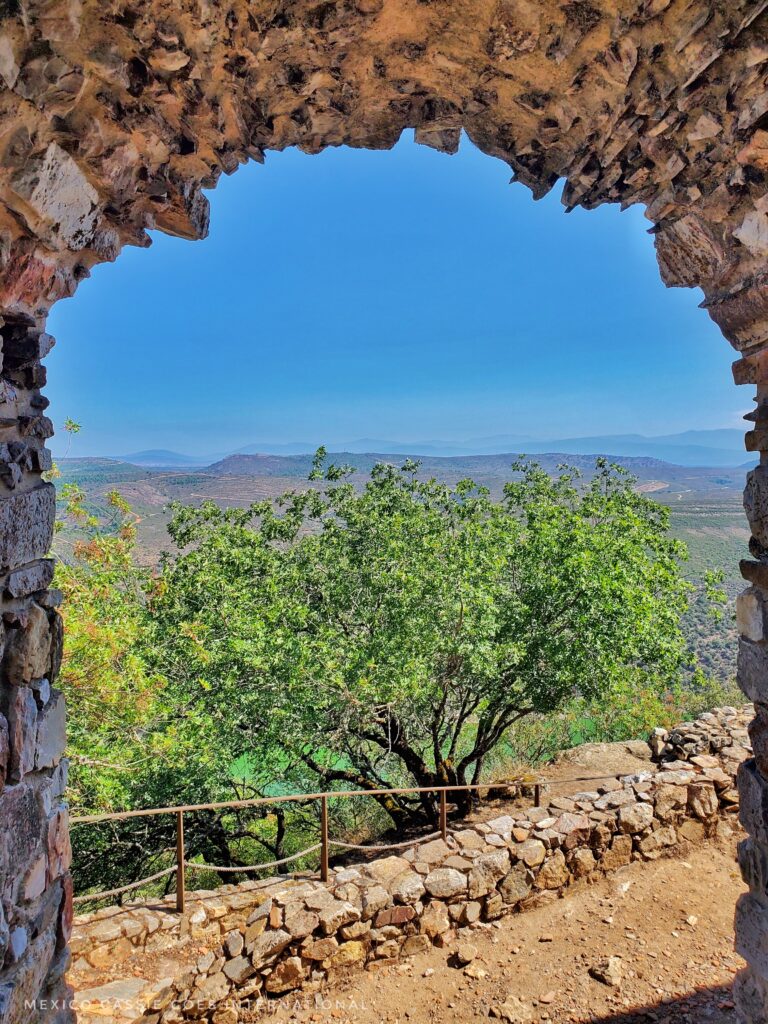
📌 This castle was built by the Moors in the ninth century. It was then destroyed during the Wars of Succession by the forces of Alfonso VIII in the twelfth century. It remained an abandoned ruin until the end of the twentieth century when work was done to restore it to make it attractive to visitors. There still isn’t much castle to see but the views are incredible. The views up here reminded me of how I felt when we visited Gibraltar and I looked out over Europe and Africa at the same time.
📌 The primary reason to visit this castle is for the astounding panoramic views it offers over the Rio Tajo and the forests along the hilly banks. Standing atop these castle towers in silence watching eagles soar is something I’ll never forget.
Extra: While you’re up visiting the castle, you will find the “Ruta Roja” behind the castle where you can walk and explore some more. We walked along for a while, and found ourselves following a small (and fun) circular path back to the castle. We found more view points to blow our minds.
🚗 How to get to Monfrague Castle
There is a well marked carpark along the Ex208. Stop here and either follow the road up (twenty minutes walking at a happy pace) or wait for the bus that takes visitors from the carpark to the castle. Obviously we walked.
El Abrigo del Castillo
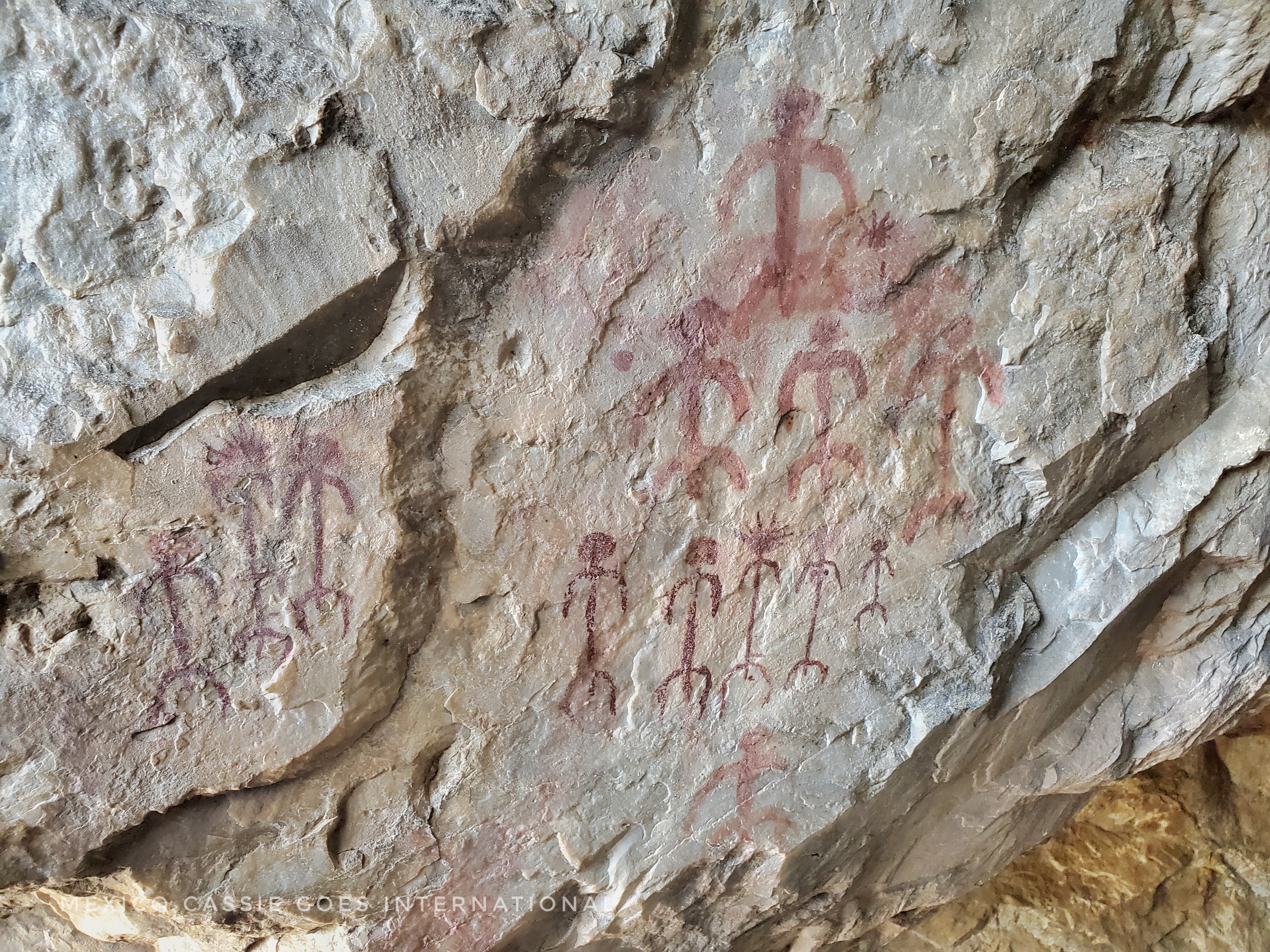
📌 Just below the castle is El Abrigo del Castillo, a shallow cave that is home to 8,500 year old cave paintings. There are apparently over 100 spots to see cave paintings in the park but this is by far the best.
📌 This is considered to be one of the most important cave art sites in all of Spain and Monfragüe is included in the UNESCO Cultural Itinerary of European Prehistoric Rock Art routes.
📌 Visits are guided (every thirty minutes or so) and can be booked in advance via the tourist information in Torrejon el Rubio or you can just turn up. If it’s busy it’s worth booking as only six people are allowed in at any one time.
📌 Our guide was absolutely fascinating. We all learned so much from him and the kids were enthralled and engaged by him.
Take a Boat Ride on the Río Tajo
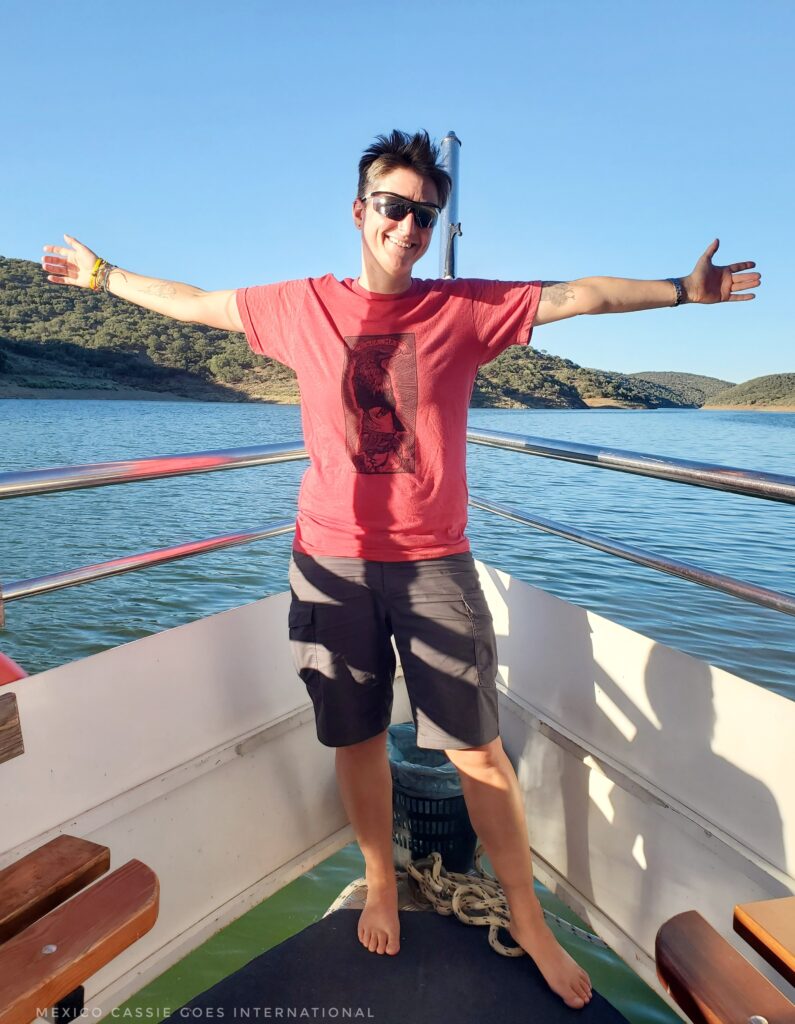
📌 The only company permitted to sail on the Tajo (Tajus) is the Barco del Tajo. If you plan on taking a boat ride then I recommend booking in advance as when we went (August) the boat was full and people without tickets did seem to be being turned away. We took a 90 minute ride and very much enjoyed the views and the commentary (only in Spanish as far as we could tell).
If you love boat rides then have you considered a trip to Tarifa on the Costa de la Luz? Here you can see dolphins all year round.
Explore the Viewpoints/Miradores
Salto de Gitano (Gypsy’s Jump)
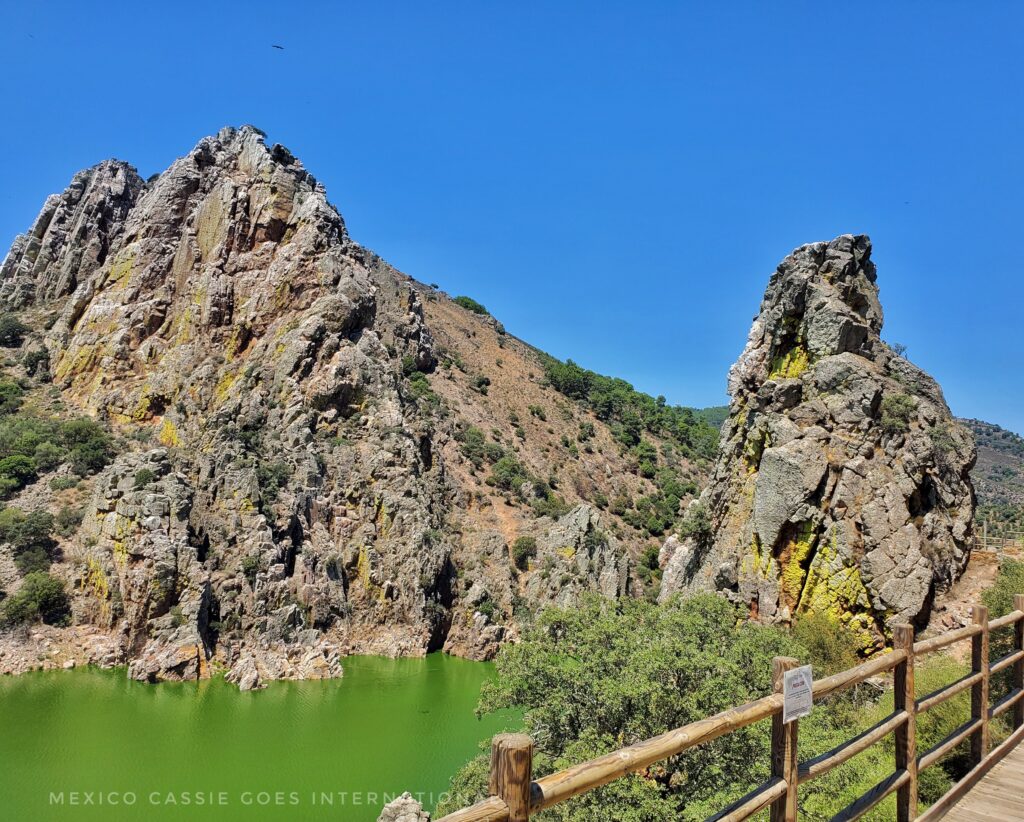
⭐️ If you love Spain, hiking and nature then you’re sure to love: The torcal de Antequera, strolling around Aracena, the hills of Zuheros and exploring the white towns of Cádiz. ⭐️
📌 The most famous view points are around the Salto de Gitano (just a short drive from the castle carpark). Here you can safely park along the side of the river and walk along the road enjoying the views of eagles and vultures over gorgeous rock formations.
📌 Peña Falcón (the smaller outcrop) is a rocky wall made of Armorican quartzite, one of the most common rocks in the park and also one of the oldest rock formations on the planet. It’s the nesting site of one of the largest griffon vulture populations in Europe.
Fuente del Frances
📌 This are was named in memory of a young Frenchman who lost his life here trying to save a child in the 1970s.
📌 We very much enjoyed walking along here under the modern bridge and coming across a weirdly tame deer that kind of hung around us for a while. Note that this is one of the areas that is considered wheelchair accessible (according to the maps I read).
Puente del Cardenal
📌 Whether you get to see the Cardenal Bridge or not depends on the time of year you visit as high waters equal submerged bridge. We did not see it although we did manage to figure out where it was and then get ourselves pretty close to the drowned bridge.
📌 This bridge was built around 1450 by the Bishop of Plasencia, Juan de Carvajalin in order to improve communications between the two banks of the river. In 1808 it was bombed to prevent the passage of French troops through the region.
📌 Note that on Google Maps it tells you you’ll be crossing the river on the Puente del Cardenal but this is not the original bridge, rather a modern one nearby.
Visitors Centres in Monfrague National Park
There are a few visitors centres dotted around the park:
Torrejón el Rubio
All three are in one location and all are very small. Stop in at the tourist information centre in Torrejón el Rubio or reserve online if you want to attend the evening telescope session (all in Spanish although I think the guide does speak English).
- Arte Rupestre
- Astronomic Observatory
- Bird Centre
Villarreal de San Carlos
- Monfragüe National Park Interpretation Centre
Romangordo
- La Casa de las Aromas, (a nice garden to walk around, very small)
- La Casa del Tío Cáscoles (private home converted into a museum to show what life was like throughout history)
- Ruta de los Ingleses (Explains the Battle of New Place during the War of Independence)
North of the Park: Northern Visitors Centre / Campsite with pool
When is the Best Time to Visit Monfragüe National Park?
Every season is special in Monfragüe National Park so really it’s more about thinking what works for you.
🔆 Summer – very hot but very few people
🍁 Autumn – cooler for walking and I bet the trees look amazing as the leaves turn
🌦 Winter – cooler and possibility of rain
🌸 Spring – Imperial Eagle aficionados should visit in Spring as this is when they’re most likely to be spotted. This is the best time for birders generally. Cooler weather for walking and the wild flowers must be breathtaking at this time of year.
What Should You Take With You to Monfragüe?
📌 We tried out water pack back-packs this trip instead of our regular water bottles and I have to say that they were something of a game changer. They felt lighter than carrying heavy bottles and everyone could drink on the go from their own pack. The kids carried a litre each in a small pack and I had 2 litres that slotted into a specialised pocket on my regular daybag.
📌 If you’re into birding, then binoculars are a must.
📌 Good walking shoes are vital if you’re trekking, as are walking poles if you’re in any way worried about your balance.
📌 It’s generally hot and sunny so sunglasses, sun block and a hat would be wise.
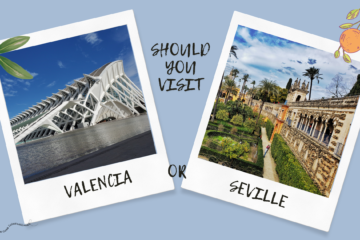
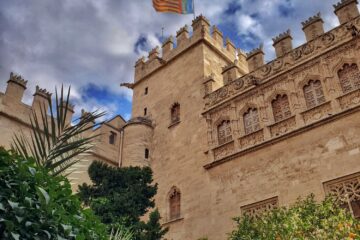
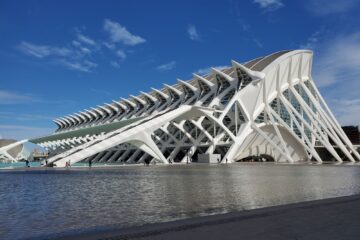
1 Comment
Angela · 21/03/2024 at 10:32 pm
Thank you Cassie for this very detailed information. Myself and my husband are visiting Terrejon el Rubio in April and you have provided us with a very useful guide to maximise our trip.